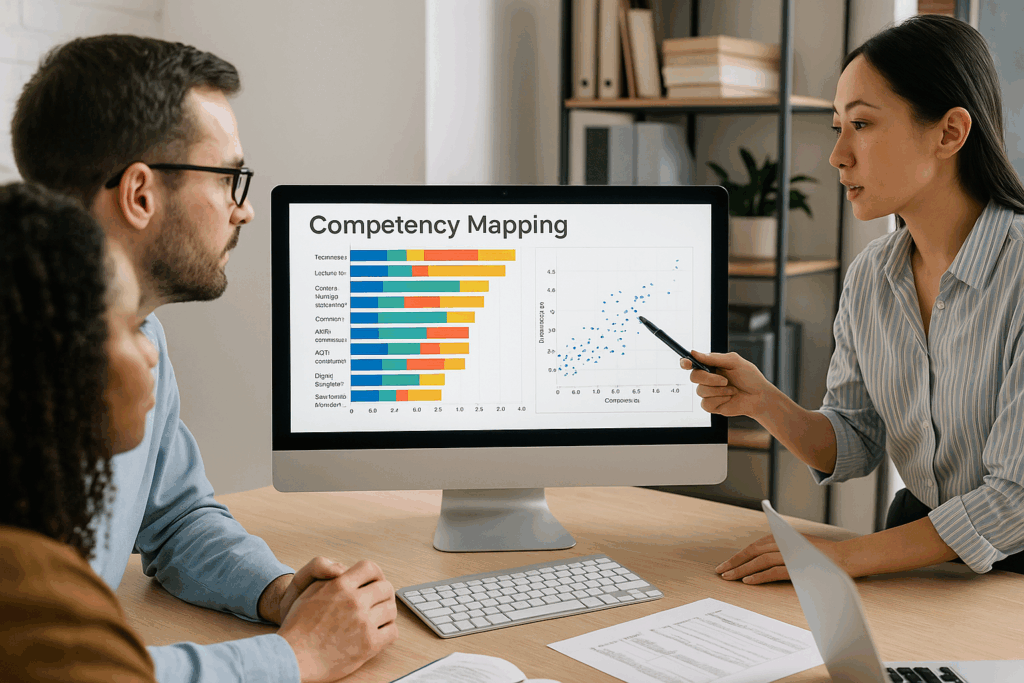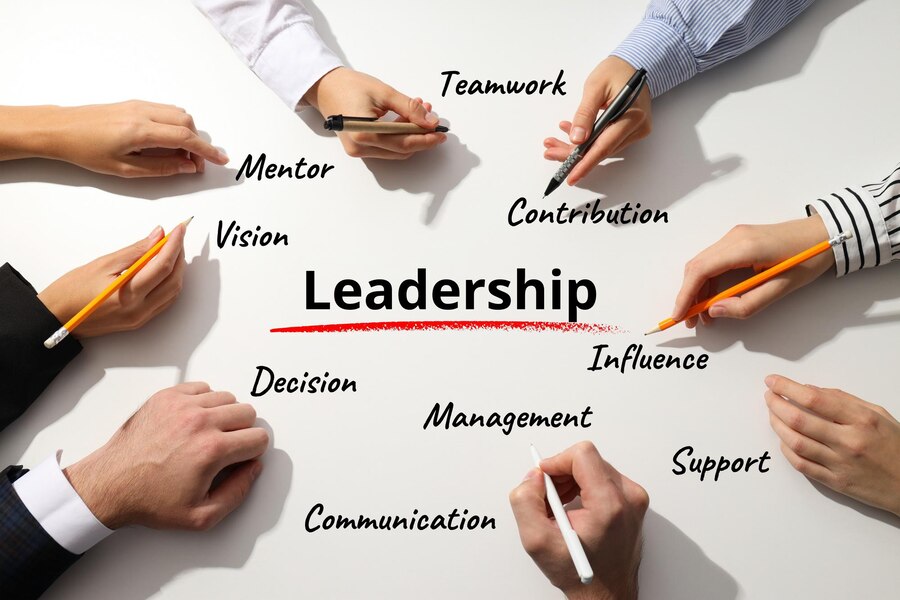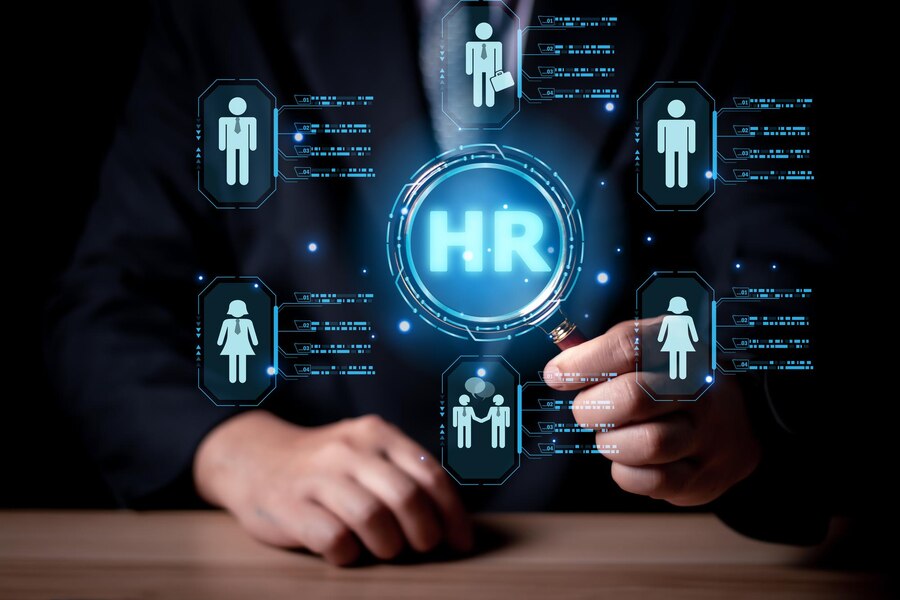AI IN COMPETENCY MAPPING CONSULTING PHILIPPINES – As organizations in the Philippines and across the globe navigate rapid transformation, one truth is becoming clear: competency frameworks can no longer be static. With new technologies, work models, and expectations reshaping industries, companies must constantly revisit the question:
👉 Do we have the right skills and capabilities for what’s next?
Competency mapping—once an HR function confined to spreadsheets and job descriptions—is now being redefined by artificial intelligence (AI). AI tools are not just automating the process, but enhancing it with data-driven insights, predictive modeling, and real-time alignment with evolving business needs.
In this article, we explore how AI is transforming competency mapping, and share anonymized case data from pilot applications conducted by MSS Corporation in Philippine organizations.
🔍 What Is Competency Mapping?
Competency mapping is the structured process of identifying:
-
The core, functional, behavioral, and leadership competencies required for each role or job family
-
The current competency level of individuals or teams
-
The gaps between current capabilities and future-ready performance expectations
Traditionally, competency frameworks were developed through:
-
Job analysis and interviews
-
Managerial input and HR facilitation
-
Generic behavioral dictionaries
-
Annual reviews with limited follow-through
While foundational, these methods are often time-consuming, subjective, and quickly outdated—especially in dynamic business environments.
🤖 How AI Enhances Competency Mapping
AI tools add intelligence, scalability, and agility to the competency mapping process in several key ways:
1. Automated Role-Competency Matching
AI can analyze thousands of job descriptions, performance data, and industry benchmarks to recommend relevant competencies per role or cluster.
2. Skill Extraction from Real Work
AI can scan employee deliverables (emails, reports, code, etc.) to infer actual skills demonstrated in work—not just what’s self-reported.
3. Gap Analysis at Scale
Machine learning models compare required vs. actual competencies, highlighting individual and team-level gaps automatically.
4. Predictive Upskilling Recommendations
AI suggests development interventions, learning pathways, or mentorship pairings based on behavioral patterns and performance data.
5. Dynamic Framework Updating
Instead of revisiting competency models every 2–3 years, AI tools continuously evolve them based on role changes, business strategy, or emerging skill demands.
📊 MSS Pilot Case Data – Key Insights from Real Organizations
Over the past 12 months, MSS Corporation partnered with five Philippine organizations in various industries—including manufacturing, tech, and professional services—to pilot AI-assisted competency mapping.
Here’s a snapshot of what we found:
📁 CASE 1: Tech-Enabled Shared Services Company (BPO)
Challenge: Disconnected competency model across support and client-facing teams.
AI Application:
-
Used NLP (Natural Language Processing) to analyze job descriptions, chat transcripts, and QA evaluation forms.
-
Mapped behavioral competencies based on high-performing agents’ actual communication style.
Outcome:
✅ Identified 3 under-recognized competencies (empathy calibration, recovery phrasing, and data validation agility).
✅ Informed a new, role-specific learning program for live chat support.
📁 CASE 2: Mid-Sized FMCG Distributor
Challenge: Manual mapping process led to vague, outdated role requirements.
AI Application:
-
AI system cross-referenced job profiles with actual performance data and external industry frameworks.
-
Highlighted discrepancies between documented expectations and frontline behaviors.
Outcome:
✅ Realigned sales supervisor role to include digital sales fluency and agile route planning.
✅ Reduced new hire onboarding time by 20% due to clearer skill expectations.
📁 CASE 3: Engineering Services Firm
Challenge: Skills data was siloed across HR, Operations, and Projects.
AI Application:
-
Consolidated employee resumes, past project reports, and peer feedback into a centralized system.
-
AI generated a skills matrix and proposed role evolutions based on growth paths.
Outcome:
✅ Created internal mobility pathways for junior engineers to grow into project coordination roles.
✅ Reduced turnover in one division by 14% within six months.
📁 CASE 4: Retail Chain with 1,000+ Staff
Challenge: No clear behavioral competency model across store management levels.
AI Application:
-
Mined behavioral data from store manager feedback forms and performance reviews.
-
Identified high-leverage leadership traits that correlated with store performance (e.g., delegation maturity and scenario-based decision-making).
Outcome:
✅ Customized leadership development program launched for store leaders.
✅ Achieved a 12% boost in average store performance rating in 1 quarter.
📁 CASE 5: Government-Affiliated Financial Services Provider
Challenge: Needed to future-proof roles in light of digital transformation mandates.
AI Application:
-
Benchmarked roles against digital maturity frameworks using AI-based market scans.
-
Mapped future-ready competencies like digital compliance awareness and data ethics literacy.
Outcome:
✅ Supported a 2-year workforce transformation roadmap.
✅ Provided a base for policy-aligned learning interventions for regulatory readiness.
💡 Lessons from the Field
Across all five pilots, a few key takeaways emerged:
-
Human + AI is the sweet spot. AI does the heavy lifting in data analysis, but human judgment remains crucial in validating cultural and contextual fit.
-
Behavioral competencies benefit most. AI excels at surfacing soft skills and patterns that are hard to quantify manually.
-
Clarity drives action. When roles, gaps, and learning paths are clearer, both managers and employees engage more in development.
-
It’s not just HR’s job anymore. Competency data is now essential to talent mobility, performance management, L&D, and succession planning.
🚀 What This Means for Organizations in the Philippines
As industries shift and jobs evolve, competency mapping must keep up. AI offers a powerful way to bring your frameworks out of the filing cabinet and into real-time, living systems that support your business strategy.
Whether you’re preparing for ISO certification, driving digital transformation, or simply future-proofing your people, AI-supported competency mapping can give you the clarity, confidence, and agility you need.
🤝 How MSS Corporation Can Help
We don’t just provide software or slide decks. We integrate technology with local context and people insight—co-developing competency systems that actually work in the real world.
✅ AI-supported competency framework design
✅ Custom mapping per role or function
✅ Capability assessments and skills diagnostics
✅ Development roadmap creation
✅ Training alignment and performance integration
📩 Want to explore how AI-powered competency mapping could benefit your team or organization? Contact us today. Let’s build future-ready capabilities—together.










